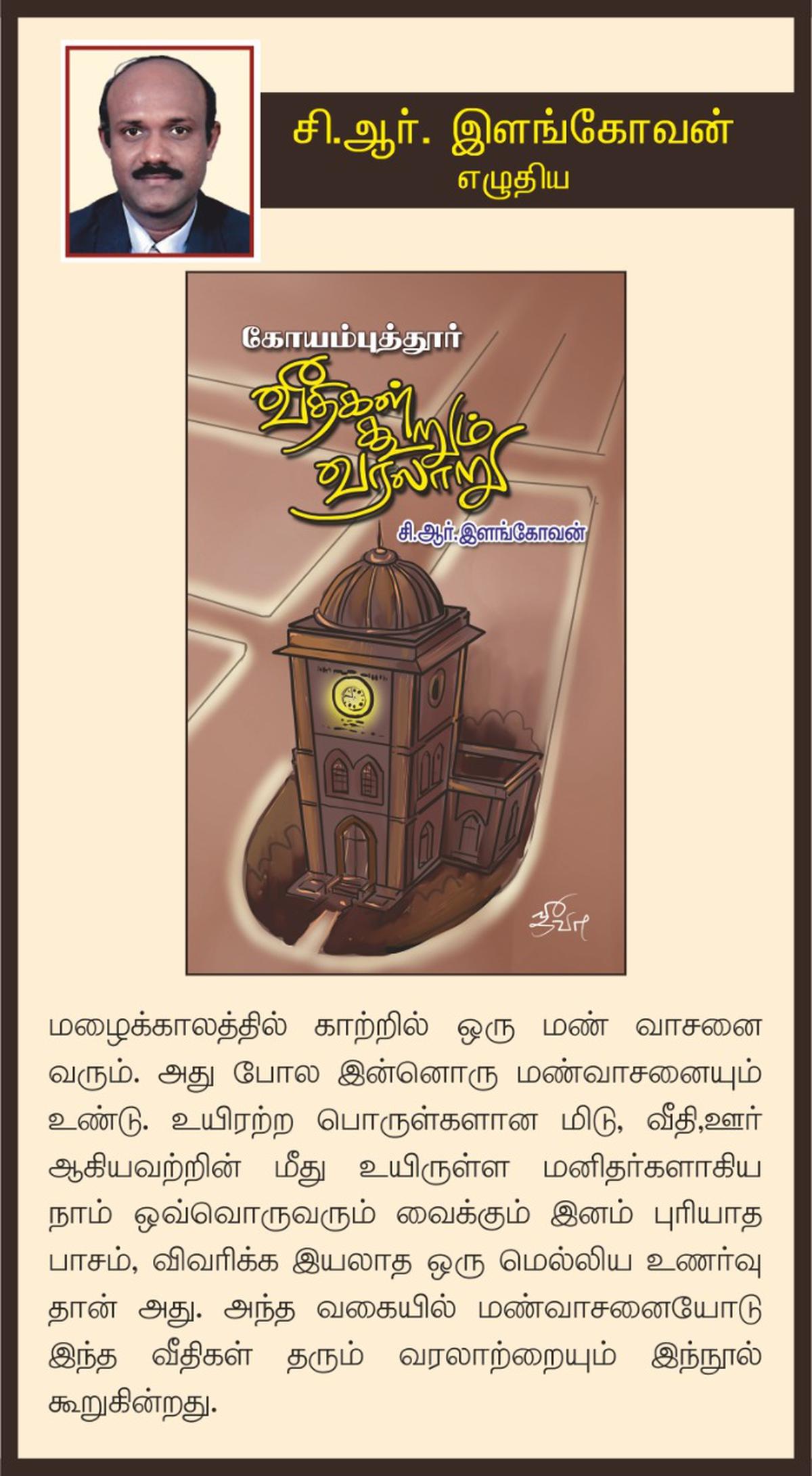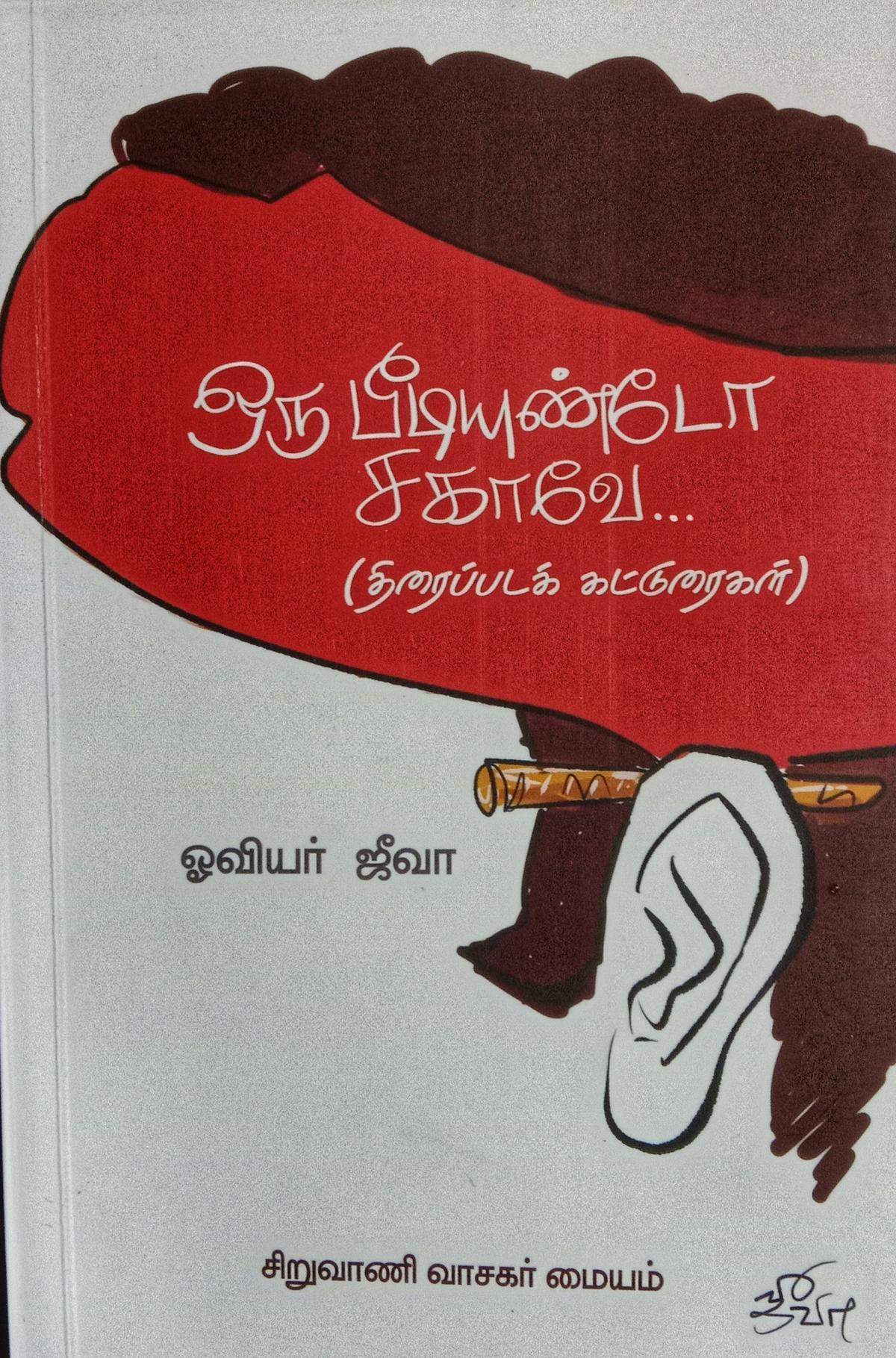A round up of books on Coimbatore’s history, cinema masters, and a compilation of cinema essays released at the just-concluded Coimbatore Book Festival
A round up of books on Coimbatore’s history, cinema masters, and a compilation of cinema essays released at the just-concluded Coimbatore Book Festival
‘A tribute to a great master’
S Anand
Film enthusiast, founder of Konangal Film Society, and author of six books on cinema masters inclding Masaki Kobayashi, Werner Herzog, Akira Kurosawa, Vittorio De Sica and the latest one on Andrei Tarkovsky
“This book is all about Tarkovsky’s take on cinema, how he conceives this art form and creates his cinema, and the aesthetics,” says Anand about his new book on Andrei Tarkovsky (1932-1986) published by Tamzhini. Tarkovsky, one of the greatest masters, made seven films. The first five were made in Russia. His first film Ivan’s Childhood (1962) was a great success and won the Golden Lion at Venice Film Festival. It was about a young boy Ivan, whose family gets killed in World War II. He becomes part of the Soviet army and ultimately dies in the hands of Germans. It is a strong anti-war film made without showing the war but leaves people devastated.
“His techniques and aesthetics are topics of discussion at gatherings on films even today,” adds Anand. Swedish master Ingmar Bergman, one of his contemporaries, is believed to have seen Tarkovsky’s second film Andrei Rublev (about a 14th century legendary icon painter who lived in Russia) more than 10 times. “Film masters including Robert Bresson, Antonionni, and Kurosawa respected his work,” says Anand and points out that Tarkovsky often challenged existing norms in film making to make films the way he conceived.
S Anand
| Photo Credit: Special Arrangement
The book features some of the Tamil translations of Tarvosky’s interviews from his book Sculpting in Time. Anand says his fourth film Mirror, his most complicated and beautiful work, is almost like memoir of his own life. Listed as one of the greatest films of all time, it’s like a collage painting and the cinematography slips between colour, black-and-white, and sepia.
“In Russia, his films were revered as well as ridiculed as films made for intellectuals. But his films were well-received by the working class, proved by the success of Mirror. When one sees his seven films chronologically, one can understand how he moved towards becoming a minimalist. Visually, every single frame is a work of art. He made only seven films and died 36 years ago. But, here in one corner of the world, in Coimbatore, his films are remembered and discussed. This book is a tribute to the great master.”
You can visit mosfilm channel on YouTube to watch Tarkovsky’s films for free
‘Every single street has a history’
C R Elangovan
Historian and author of 12 books on Coimbatore’s history
The bustling Krishnasamy Mudaliar Road or Brooke Bond Road, once called Palm Grove Road, stands testimony to a glorious past where trade union movements flourished. “With the setting up of Coimbatore Spinning and Weaving Mills (CSWM) in 1888, one of the earliest textile mills in the region, and later Somasundara Mills and Kaleeswara Mills, this road cemented the birth of the revolutionary movement when the region saw a boom in textile mills and soon became the Manchester of South India,” says C R Elangovan, author of Veedhigal Koorum Varalaarugal (Srikanth Publications) that introduces 87 streets in Coimbatore and the history behind their names. “Every single street in the city has a story to tell. The book is an attempt to document them.” The Brooke Bond Road also housed Srinvasa Theatre that screened English movies. “I remember watching The Five Man Army there. Now, the theatre has made way for an apartment complex,” says Elangovan.

Book Cover
| Photo Credit: Special Arrangement
The book talks of Siviyar Veethi, a narrow lane located near the bustling Nawab Hakkim Road, a colony of ‘Siviyars’ from the fishermen community ever since they migrated from Mysore in the 18th century, and Oppanakkaara Street that has its origins dating back to the times of Mysore rulers when oppanavaaru meant tax collectors. “Nawab Hakkim was a philanthropist and the road was named in honour of his contributions to the city. Youngsters should learn about the history of the land. While we enjoy our sweet Siruvani water supply, we should also know about the 40-year struggle led by the visionary CS Rathina Sabapathy Mudaliar who took charge as a member of the Municipal Corporation as a councillor and then became the chairman. The arterial RS Puram Road bears testimony to his contributions.”
‘I share my lessons from cinema with readers’
V Jeevananthan
Author of National Award-winning book Thirai Seelai, on cinema, and founder of Chitrakala Academy that grooms young artists. His second book is Oru Beedi Undo Sakhavey
A compilation of essays and articles on cinema — that’s how author Jeevananthan describes his second book Oru Beedi Undo Sakhavey. Jeevananthan contributes regularly to magazines like Aavanazhi, Canada-based Thaai Veedu, Sri Lanka-based Vyuham besides others. “I am a movie buff. I watch one movie every day. I share my experiences, and my lessons from cinema with readers. These are personal essays on cinema, on actors, art directors, political films, to name a few. I talk about Clint Eastwood as well as Lijo Pellissery, and also actors like Fahad Fasil, Soubin, and Yogi Babu,” explains Jeeva.

Book Cover
| Photo Credit: Special Arrangement
The title, he says, is inspired from the famous code exchanged between communists — beediyundosakhave oru theepetti edukkaan. “Many Malayalam films revolved around the rise of communism in Kerala. The first chapter in the book kick-starts a discussion on the topic,” says Jeeva and lists the films starting from Lal Salaam, Sandesham, Arbikkatha and Adoor Gopalakrishnan’s Mukhamukham, that talks about the moral crisis of society and is an introspective look at oneself and how communism affects whether one is a pro-communist, anti-communist or neutral.
Some of the chapters highlight films that dealt with the legal system quoting scenes from one of the first films in Tamil Parasakthi, writtten by Dr K Kalaignar Karunanidhi, and known for the iconic court room scene featuring actor Sivaji Ganesan and his fiery dialogues. “I have also mentioned the award-winning Marathi film Court and the recent ones like Jai Bheem and The Trial of Chicago 7. My film essays draw references to films in all languages. I hope the book inspires youth to search for good films to watch.”

V Jeevananthan
| Photo Credit: Special Arrangement
While ‘Mone Dinesha’ chapter is entirely dedicated to filmography of Mohanlal, there are other articles that talk of Shiny Jacob Benjamin’s docu-fiction, In Return: Just A Book, inspired by Perumbadavam Sreedharan’s bestseller Oru Sankeerthanam Pole. The Malayali author had written the book while living in a village in Kerala but his characters were protagonists in a famous novel set in Russia.
Some of the essays draw comparative studies with French films. For example, one of the earliest films Duet by K Balachander was inspired by the 1990 French film Cyrano de Bergerac.
























